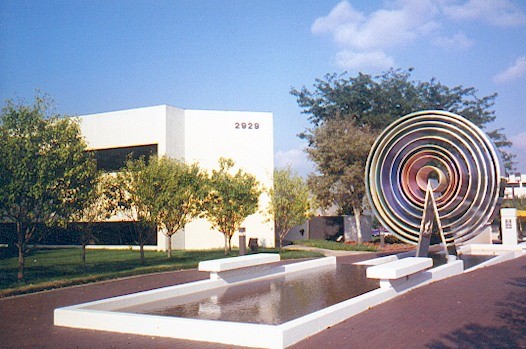“There would be no Hy-Line chickens today if it were not for hybrid corn”, said Henry B. Wallace Jr. M.S.A. in London on 13th May, 1949 at a Special Poultry Breeding Conference Chaired by Dr Rupert Coles.
Just over two years earlier his father Mr Henry A Wallace Sen. brought 72 eggs to England by air. The eggs were hatched at the North Hampton Institute of Agriculture, under the care of the Vice-Principal Janet W. Strang on May 4th 1947 and produced 19 pullets which tested negative for B.W.D. The first egg was produced on Sept 26th 1947 (146 days of age) and the first year of lay from Oct. 1st 1947 to Sept. 30th 1948 during which time only one bird died the hens averaged 232.8 eggs.
Very little was known about the effects of inbreeding on chickens when the Hy-Line Poultry Farms was started as a Department of Pioneer Seed Corn Co. in 1936. The volume of inbreeding work completed up to then was very small so the results were generally of a very negative nature. However, the principles of crossing inbred lines of corn were working so the Hy-Line chicken project was started with the intention of getting the experimental work on a large enough scale so that the handicaps encountered in the breeding done at State colleges would be overcome by selection on large numbers.
Henry B Wallace graduated in 1938 at Iowa State College in Agriculture specialising in Genetics and commenced work on the inbreeding programme using the assembled lines of stock. The program developed with purchases of eggs from around 50 different breeders out of which only about six strains of RIR, WL and NH breeds were capable of withstanding the inbreeding program. The Hy-Line program used inbreeding as a means of purifying a large percentage of the economic characteristics of a family group of birds. The inbreeding was done on a brother-sister basis for three or more generations before the rate of inbreeding was slowed down. A number of inbred lines were developed and maintained in this way. These inbred lines were then crossed to find those outstanding combinations. When the outstanding combinations were discovered it was reproduced commercially by repeating the cross from expanded numbers of the same inbred lines which went into the cross. By 1940 the experimental programme was the largest in the USA. The name “Hy-Line” was trade-marked in 1941 to be used on the first few commercial single-cross chicks sold in 1942. It was recognised that the experimental programme may take 20 years to complete. The inbred lines were invariably inferior to the standard-bred birds from which they were originally developed.
In corn about 1% of the potential inbred material handled each year was carried for further inbreeding. In hens, the problem was much tougher because of the expense and smaller generation numbers for selection. On average about 8% of the inbred chicks hatched each year were used for further inbreeding. Typically 75,000 inbred chicks were hatched each year from which 6,000 were taken for inbreeding in the next generation. In parallel around 70,000 chicks were hatched to get the necessary selection to maintain old and develop new inbred lines.
The development and maintenance of inbred lines involves serious management and disease problems which are more serious than those encountered in outbred or random-bred populations. The disease and management problems outweighed breeding problems. Although strict quarantine and sanitation was not observed it was believed the stock was tougher as a result.
During the development of the inbred lines each year losses due to coccidiosis, respiratory disease, cholera and typhoid were significant but were vastly different between lines ranging from 1% to 75%. This indicates that in some lines resistance or susceptibility to a disease was being fixed. One line may be the most resistant to one disease and most susceptible to another. It was recognised that resistance to nutrient deficiencies and diseases was very specific and that no one inbred line was generally more resistant or susceptible. However most highly inbred lines may possess specific resistance which is far greater than any non-inbred populations. The maintenance of lines was frequently a problem when a particular gene for susceptibility to a disease became fixed.
In addition to nutrient and disease problems inbreeding caused serious problems with hatchability of fertile eggs, fertility and shell faults. Other important characteristics in the selection programme were intensity of production, persistency of production, freedom from winter pauses, egg weight, albumen viscosity, freedom from blood and meat spots, non-broodiness, early maturity, rapid feathering, rapid growth and liveability of offspring. Considerable emphasis was placed on performance of sisters. Many lines were eliminated because bad choices were made on a few of the birds. Independent culling was practised on individuals. In the initial stages minimum limits of 80% fertility, 80% hatch of fertiles, 50g egg weight and 90% chick liveability to 8 weeks were used.
The most important element of the experimental programme was testing various combinations of crosses in the hope of finding a cross which “nicked”. About half of the crosses were never better than good standard bred stock. The current commercial crosses are always tested alongside new crosses. By 1950 the programme included over 20,000 birds being trapnested over more than 6 States and 20 poultry farms. When an excellent cross was found it was further field tested on a wider cross-section of farms to be sure it would perform well. Frequently when crosses were repeated in successive years the performance results were not repeatable and the results often depended on the farm being used for testing. It was recognised that the conditions of disease and management vary widely from farm to farm and it was difficult to test crosses on enough farms so that results were able to be applicable to large scale commercial production.
The beginning of the commercial operations was achieved by taking the birds to expand the line which were not selected to continue the line or placing on the pedigree farm. It was assumed that they were genetically similar to the selected birds and the difference was due only to environmental factors.


